As one of the most requested metrics from business owners, the return on investment for review marketing is surprisingly hard to calculate. Yet, it’s not impossible.
Measuring ROI for reviews is slightly backwards from the way you’d measure the ROI for all other marketing channels. It takes a lot of effort to build a great brand reputation and one simple mistake to ruin it.
To measure ROI for review marketing, we have to look at both revenue earned and revenue lost. First, let’s take a look at why review marketing investment is so hard to measure and then how to measure it.
Why is it so Hard to Measure ROI for Review Marketing?
Review marketing is more of a long-term effort for any business. Compared to short-term marketing goals (like gaining customers through an advertisement), reviews have much more longevity. This makes them harder to measure.
A review posted 3 months ago might be what convinced a customer to purchase from your business, but you’d never know. In your analytics, the sale might get attributed to the direct traffic channel (eCommerce) or simply get lost among the foot traffic in your store.
In order to measure marketing efforts, you have to know which actions and touch points your customers encountered before they reached you. Then, add a value to those points.
Depending on where your customers saw your reviews, gathering this information may be impossible. Even if you gather the right data, there’s no guarantee you were able to measure it accurately. So, how do you calculate the return on investment for review marketing?
Start by Measuring Lost Revenue From Bad Reviews.
It’s always best to begin establishing the risk of not managing reviews at all. You lose more revenue from bad reviews than you gain from good ones. A single terrible review might make everyone forget the ten 5-star reviews right before it.
“Our research also uncovered that businesses risk losing as many as 22% of customers when just one negative article is found by users considering buying their product. If three negative articles pop up in a search query, the potential for lost customers increases to 59.2%. Have four or more negative articles about your company or product appearing in Google search results? You’re likely to lose 70% of potential customers.”
–Moz
Let’s find out how much your business risks losing because of negative reviews. First, open an “incognito” or “private” window, depending on which browser you use. We want as unbiased of search results as possible. Using this kind of window excludes your own search history when you search for your business. Type in your business name and count the number of negative results on the first page.
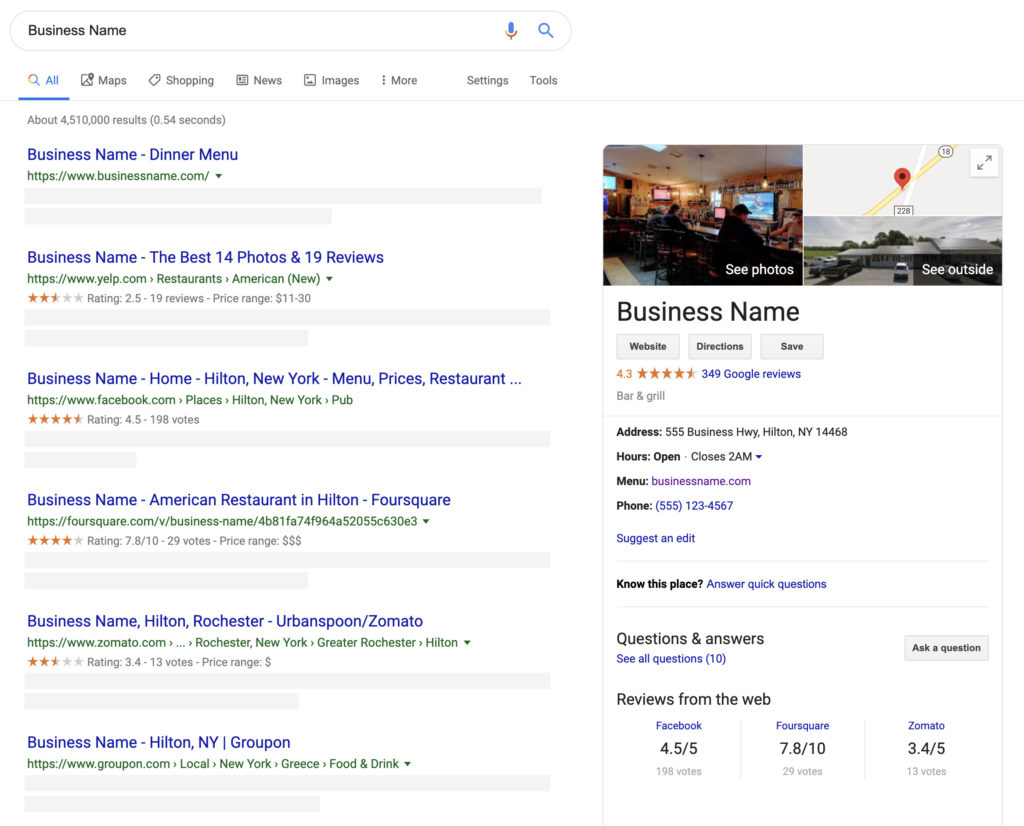
Next, assign a value to your negative results. We’ll use the data provided by Moz.
- 1-2 Negative Results = 22% Revenue Loss
- 3 Negative Results = 59% Revenue Loss
- 4 Negative Results = 70% Revenue Loss
Most people don’t go past the first page of search results so to keep it simple, we only used page one. Then using a formula provided by Grade.Us, we can calculate how much potential revenue you (or your client) risk losing due to negative reviews. Plug your information into this equation:
Y = X / (100-X)
where:
- X = Average percent of customers lost based on Moz stats.
- Y = How many more customers you could have had (as a percentage).
Y = 22 / (100-22)
Y = .2
The business in our test could have potentially had 22% more business had their Yelp and Zomato ratings been higher. They’re losing their ability to convert leads through reviews.
How to Measure the ROI of Review Management
How you invest in managing your reviews will vary. You might choose to use software, a marketing company, additional customer service training, your WiFi, etc.. The “investment” might even be as minimal as adding a call for action to leave a review in your email signature. You might choose to do nothing except monitor and respond. If your investment costs you nothing but time, even better. But investing in reviews is worth it. Here’s how to calculate the ROI for reviews.
First, you will need to gather the proper data. You need to know:
- How much investment, money or time, is in reviews.
- Number of leads from reviews.
- Average customer spend.
- Visits per customer.
- Lead conversion rate.
In our example, this business invests only in Yelp, Google, and Facebook Reviews. They pay a marketing agency $1500 per month to manage their online reputation.
Find The Number of Leads From Reviews
Estimating the number of leads generated from reviews is becoming easier as technology advances. Old-school marketing required surveying customers. Now, insights from reviews platforms provide key metrics. Yelp, for example, gives you the exact number of leads generated over a set time frame.
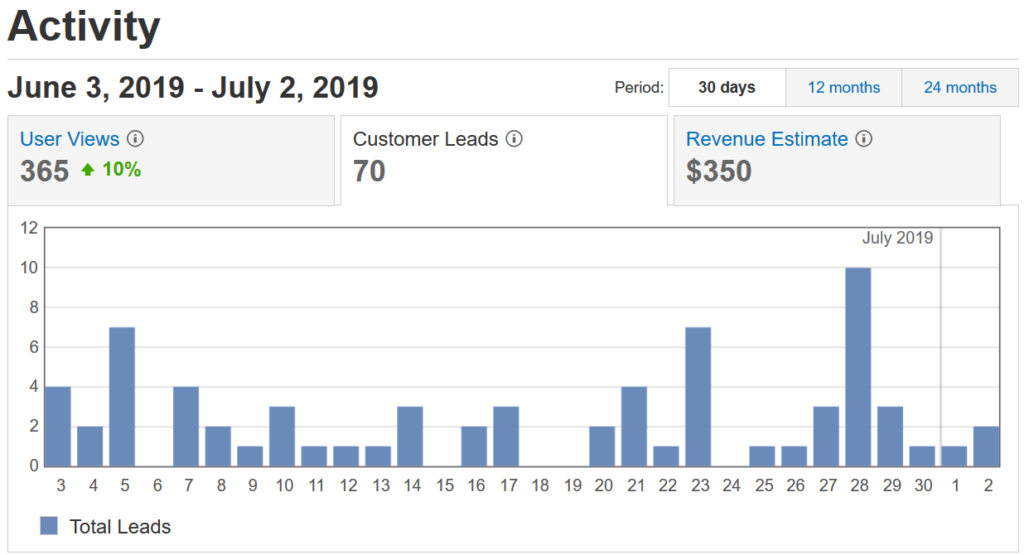
This business had 70 leads from Yelp over a month-long time period. Google has similar tools, too. You can see most of the same information, aside from the revenue section.
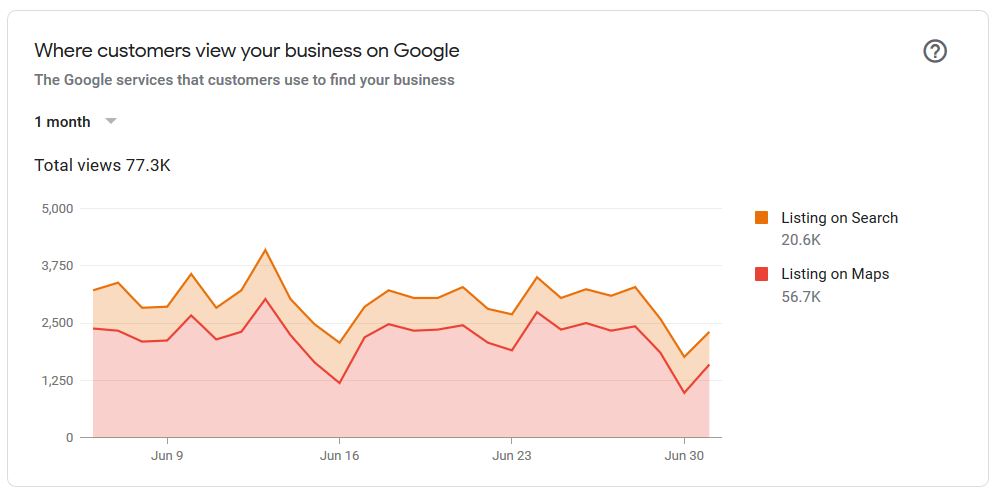
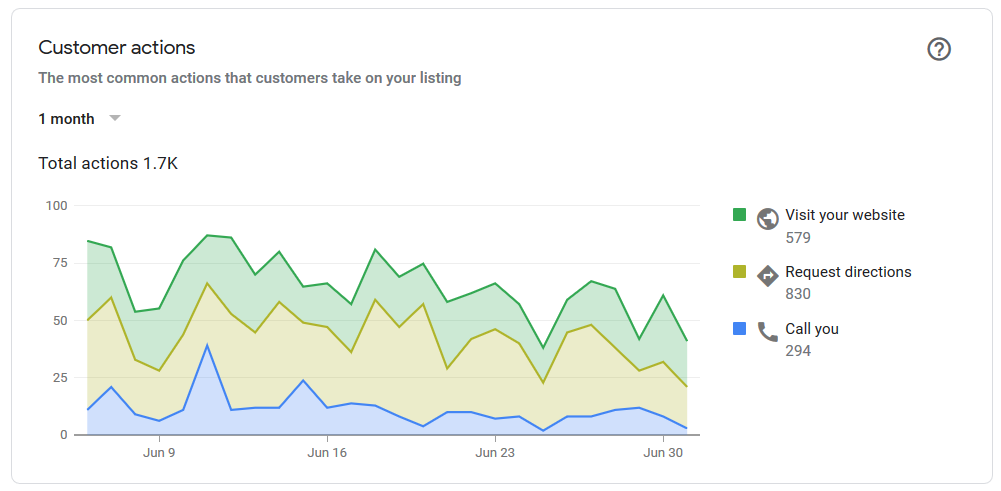
The Google My Business Page for the same business provided 1,700 leads in the same month. If we’re only counting our investment in these two platforms, we have 1,770 total leads associated with reviews.
To add Facebook, we’ll use the number of Page Views, increasing our total leads to 1,790.
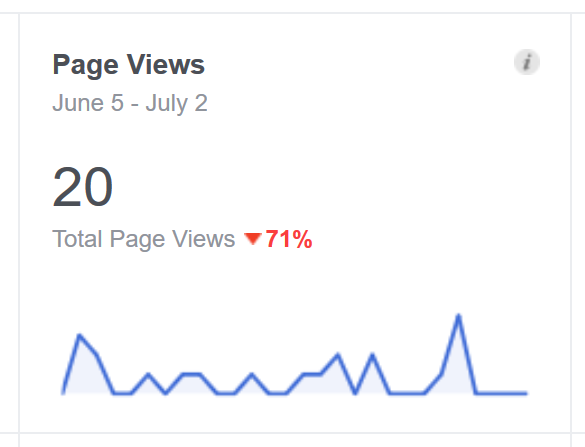
Get More ROI
We're constantly looking for the best ways to get the most out of online reviews. Subscribe to our newsletter for more tips about online reviews and digital marketing.

Find the Value of a Lead
The next two pieces of data are found in your business analytics. Most point of sale systems will break down your average customer spend and number of purchases per customer. If you can’t find this information, you will need to calculate it by hand or “guess-timate” it.
In our example, we’re estimating people spend about $25 per visit with an average of 1 visit per month, or 2 visits per year.
Find the Conversion Rate
Now let’s identify the conversion rate using the number of leads and the number of converted customers.
On Google, we’ll use the amount of people that chose to “Request directions.” For Yelp, use mobile check-ins and directions/maps views. Those are the two the most directly related to a conversion available. They’re also similar to the “Get Directions” metric from Google.

Facebook also provides insights that can be used as a “converted lead” number for these purposes. To find it go to the “Actions on Page” tab under settings. We’ll use only the “Action Button Clicks” here.

Taking each of these numbers, calculate the conversion rate with the following equation.
Y = X / B
where:
- Y = Conversion Rate
- X = Converted Leads
- B = Total Leads
Y = (26 + 9 + 830 + 1) / 1,790
Y = 48%
Our conversion rate in this example is 48%.
Analyze the Data
You should always look at numerical data from multiple angles. Start out with laying out the numbers you’ve gathered. Your analysis isn’t limited to these equations, but these equations are a great place to start.
- Investment = $1500 / mo.
- Leads from Review Management = 1,790
- Average Customer Spend = $25
- Visits Per Customer (per year) = 2
- Lead Conversion Rate = 49%
Next, plug this data into a series of formulas to find the ROI for review marketing.
Calculate Revenue Brought In Per Month from Reviews
To calculate ROI, we need to know how much revenue we can attribute to these reviews platforms each month. In order to do this, use Yelp’s formula but include all the data we found.
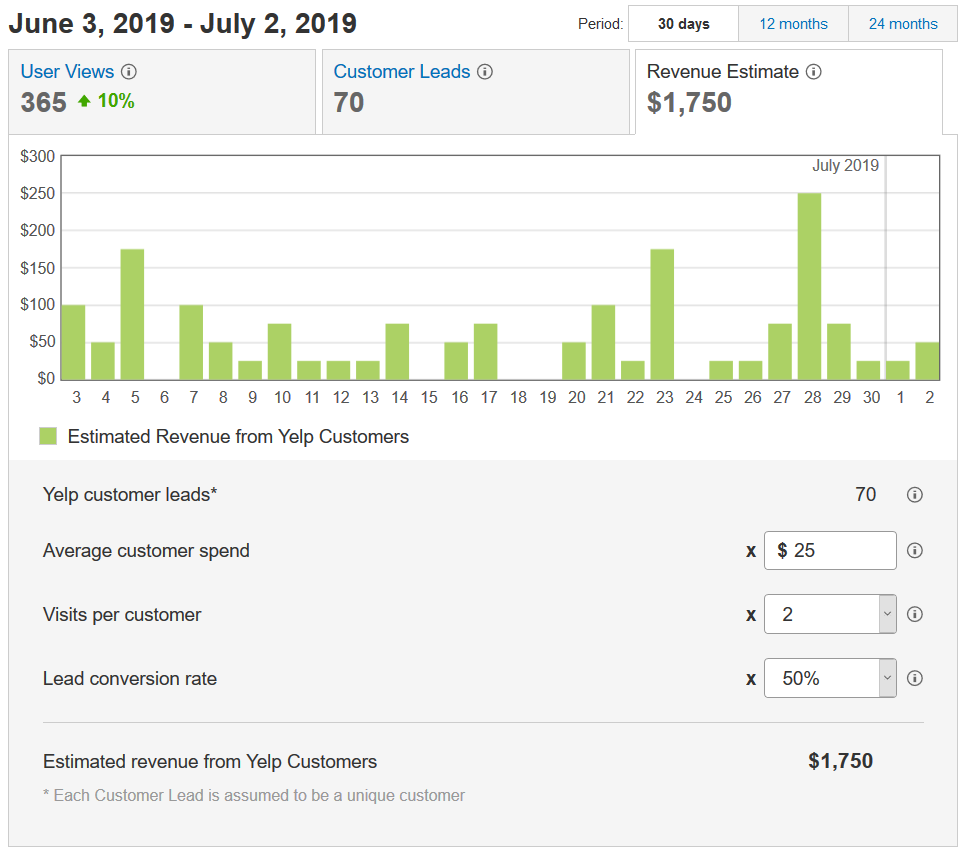
Our equation to calculate the revenue for the month looks more like this:
C = B * A * D * Y
C = 1,790 * $25 * 1 * .48
C = $21,480
where:
- C = Estimated Revenue
- B = Total Leads
- A = Average Customer Spend
- D = Number of Visits Per Customer (per month)
- Y = Conversion Rate
Reviews earned this business an estimated $21,480 in the past month.
Now Calculate the ROI for Review Marketing
Now that we have the value of the investment in review marketing, we can look at ROI. The basic ROI equation is:
ROI = (Current Investment Value - Investment Cost) / Investment Cost
ROI = ($21,480 - $1,500) / $1500
ROI = 13.32 or 1,332%
The return on investment for our example business is 646%. Imagine if they were not managing their reviews and their Yelp or Google ratings were much lower.
The Value of Online Reviews
There is no doubt that online reviews provide value for your business. The example above only managed their reviews platforms. Their investment allowed them to bring in additional revenue they may not have been able to other wise.

